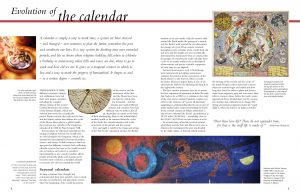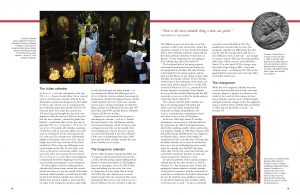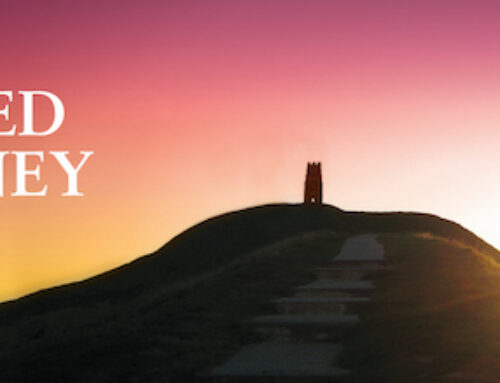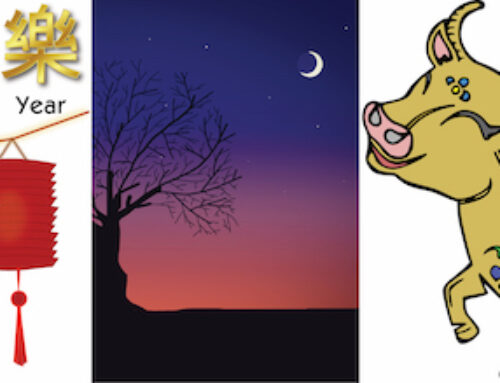 Evolution of the Calendar
Evolution of the Calendar
Dateline – internationally released hardcover book
This is a short excerpt from the introduction to the book Dateline, which outlines the evolution of the calender into the method of marking the days that we know today…
“Dost thou love life? Then do not squander time, for that is the stuff life is made of.”
Benjamin Franklin
Calendar: A chart showing the days and months of the year, from the Latin calendarium, meaning moneylender’s account book, itself a derivation of the word calendae (or kalendae), meaning first day of the month.
A calendar is simply a way to mark time, a system we have devised – and changed – over centuries to plan the future, remember the past and coordinate our lives. It is any system for dividing time over extended periods, and lets us know when religious holidays fall, when to celebrate a birthday or anniversary, when bills and taxes are due, when to go to work and how old we are. It gives us a context in which to live and a way to mark the progress of humankind. It shapes and to a degree controls us.
Throughout time different countries, cultures and civilizations have had their own unique calendars, including the complex Mayan one of the ancient Central Americans; the system of the Roman empire, which was chiselled into stone; the scientifically precise Persian one, that reflected the sun; and the Islamic system that follows the cycles of the moon. But today, in a global world, the common use calendar is the Gregorian, introduced in 1582 by Pope Gregory XIII.
 Several others are still used, especially for the timing of religious festivals, but usually they are used alongside the Gregorian, which is the standard for international government, politics, science and history. It didn’t matter so much in ages past that different countries had conflicting calendar systems, but now as the world becomes one, as business and science is extended internationally, as one country’s politics affects people around the globe and overseas travel becomes more common, a standard calendar is necessary for civil use around the world.
Several others are still used, especially for the timing of religious festivals, but usually they are used alongside the Gregorian, which is the standard for international government, politics, science and history. It didn’t matter so much in ages past that different countries had conflicting calendar systems, but now as the world becomes one, as business and science is extended internationally, as one country’s politics affects people around the globe and overseas travel becomes more common, a standard calendar is necessary for civil use around the world.
Seasonal calendars
As long as man has thought and communicated, he has needed a way to mark the days, record history and plan future events. Since the beginning of the world, the pattern of the seasons and the movement of the sun and the moon have been the basis by which time was measured – and this remains true today. Different cultures and countries have had different ways to mark it, but all are dependent on nature as the basis of their time keeping. Even in the industrialized modern world, so far removed from the cycles of the earth, the calendar remains tied to the movement of the planets and the seasons.
Day and night is ruled by the rising and setting of the sun. In the calculation of time, the earth’s rotation on its axis marks a day, the moon’s orbit around the earth marks the passing of a month, and the earth’s orbit around the sun determines the passage of a year. These remain constants throughout every calendar of the world, both old and new, and the lengths are now scientifically determined by astronomers who are amazed that the people of centuries past could calculate these cycles so accurately without the technological advancements and equipment we have at our disposal now.
In ancient times, when life revolved around agriculture and the sun and moon were seen as deities to be worshipped, the year was divided by the eight sabbats, or festivals, which marked the turning of the seasons and the cycles of the earth. They had to know when each season began and ended and how long they lasted in order to plant and harvest crops, hunt migratory prey and even move their tribe to warmer climes before the harsh winter approached.
They divided their year by seasons, not months, and celebrated each change. The spring and autumn equinoxes (Latin for “equal night”), when the earth is in balance and the length of day and night is exactly equal, as well as the summer and winter solstices (Latin for “sun stand still”), where the sun is at its northern or southernmost extreme, split the year in four and were the acknowledged midpoint of each season – the summer solstice was known as midsummer and the winter solstice as midwinter. The four cross-quarter days, which took place halfway between the celestial occurrences and were tied to agricultural events such as the harvest, marked the beginning of each season.
These people, now referred to as pagan or pre-Christian, were very aware of when these seasonal events occurred and the sun’s position in the sky throughout the year. They watched the skies and observed the behavior of birds and animals and the growth cycle of plants and trees. They built stone circles and ritual cairns that were aligned to sunrise on the morning of the solstices and equinoxes to alert them to the day on which they occurred. These eight days, known as sabbats, made up their Wheel of the Year, and fell roughly six weeks apart. They were a reliable way to mark and record time – thus their use as an ancient calendar and the basis of the ones we still use today
 Lunar and solar calendars
Lunar and solar calendars
All calendars today and throughout history have been based on the movement of the sun, the moon or both. While the sun and the cycle of the seasons indicates the length of a year, the cycles of the moon were also important to ancient civilizations as a way to mark the passing of time, and this is still reflected in some calendars today.
While it takes many years to observe the movement of the earth in relation to the sun and to determine the pattern of solar years, the moon and its phases are easily observed and regular. For this reason the first calendars were lunar calendars, with Cro-Magnon people credited with inventing one around 32,000 BCE. Religious days, harvest dates and events were planned for new moon, full moon or its quarter phases, and time was marked by the cycles of the waxing and waning of the golden orb. Today, with precise astronomical calculations able to be made for the sun and its position and movement, most calendars are solar or lunisolar.
Lunar calendars, such as the Islamic calendar, are based on the cycles of the moon, or moon phases, rather than the sun and the seasons. A month that echoes the moon is known as a synodic (from the Greek sunodos, meaning conjunction) or lunar month, and is measured primarily from new moon to new moon, although in some areas such as Tibet and northern India, a month is calculated from full moon to full moon. One of these lunar cycles is 29.5306 days – or just over 29 days, 12 hours and 44 minutes – long, so the months usually alternate between 29 and 30 days in length to even this out. A lunar calendar is thus comprised of 12 months, six of 29 days and six of 30, which runs for 354 days. Because there is a difference of around 11 days between a lunar and a solar year, the dates on a lunar calendar will shift from year to year with respect to the seasons. For this reason, today most lunar calendars are also lunisolar, with intercalary months inserted to keep them in sequence with the solar, or seasonal, year.
Solar calendars, such as the Persian and Gregorian calendars, are based on the movement of the earth around the sun. In these a calendar year is kept to the same length as a tropical or solar year, or the time it takes for a complete cycle of the seasons, calculated to 365.24219 days, or just over 365 days, five hours and 48 minutes. There are different ways to achieve this – some calendars add an intercalary day to average it out over several years, others do it by beginning the new year on the exact moment of the spring equinox each year. Either way, each year is subdivided into months, but no attempt is made to synchronize the start of the months or their length to the phases of the moon, thus its classification as a purely solar calendar.
Lunisolar calendars, such as the Jewish calendar, are synchronized to the movement of both the moon and the sun. It is one where the passing of time is based on the lunar months, but which also takes into account the solar year, resulting in the addition of an intercalary month as required to bring them back into alignment and compensate for the shift in the seasons and the difference between 12 lunar cycles and one solar cycle.
The calendar we use today
Today, the internationally recognised calendar is the Gregorian. It is used in most countries of the world. In some places it is used alongside another, such as in China, which has its own traditional lunar calendar for planning holy days but uses the Gregorian for civil purposes. The Gregorian calendar is now used throughout almost the entire modern world, the most famous exceptions being the Greek and Russian Orthodox churches, which still observe the old Julian calendar, and Iran, which has its own method of calculating the passing of time.
The Gregorian is very similar to the Julian calendar, with a small tweaking to increase its accuracy, and has its roots in the Roman method of charting time.
The Roman calendar
Long before the Christian Era, the priesthood of ancient Rome and its empire controlled the calendar and kept track of time. It was much more fluid than it is now, partly because life back then was so different. People worked from sun up to sun down, rather than any specific hour, and the longer days of summer and the shorter days of winter were taken into account, with an “hour” varying in length between 45 minutes and almost 90, rather than the standard 60 minutes we have since imposed. Life was much more relaxed back then – things like bus timetables, 2pm deadlines and specific meeting times were unheard of, which has to be taken into account when we compare the calendars of ancient times to today. People then weren’t ruled by time as we are now, rather by the seasons, the period of daylight in each day and the weather.
Romulus, the first ruler of Rome, is thought to have introduced their calendar in the eighth century BCE. Of course they didn’t calculate time in the way we do now, from the birth of Jesus Christ – the Roman Empire occurred before then, and thus we can only apply such dates retrospectively. Rome was founded in what we now refer to as 753 BCE, but which they referred to as year 1. The Roman calendar counted the years ab urbe condita – “from the founding of the city” of Rome, and so the year we would now call 600 BCE was in fact 154 AUC (although to the people of that time, years were more commonly identified by the name of the two consuls who ruled during that year, and past time was referred to by “the year of the reign of…”)
Their year began on the spring equinox, the day they called Martius 1, which occurs around March 21 in the Gregorian calendar. They had 10 months of around 30 days each – Martius, Aprilis, Maius, Junius, Quintilis, Sextilis, September, October, November and December. The first four were named after gods, the last six were taken from their words for five, six, seven, eight, nine and 10, as they were the fifth, sixth etc month of their year. The months we now know as January and February didn’t exist back then – instead the 10 months were followed by a period of winter that had no name or number and could vary in length depending on the rest of the year. (Most calendars are considered complete calendars as they provide a way of naming each consecutive day. The Roman calendar was an incomplete calendar as the days of the winter months were not named, but merely lumped together.)
According to tradition, during this time the months could vary between 20 and 35 days in length, although the ideal was six months of 30 days and four months of 31, plus the winter period. Their only rule was that the whole year contained 360 days. This was open to corruption from the high priest in charge of the calendar, who could add or subtract days for political gain as he saw fit.
Frustrated by the variations, Numa Pompilius, the second king of Rome, made revisions to the calendar around 700 BCE. He added the months of Februarius, named after the purification festival, and Januarius, named after Janus, the god of doors, following December. Around 150 BCE the order of these months was reversed and Januarius became the first month, giving us the order we still use today.
Pompilius and his advisers calculated that the moon completed 12 of its 29.5 day cycles in 354 days, while the earth took around 365 days to go once around the sun. He declared that there would be 12 months – four of 31 days, seven of 29 days and one of 28 days – to be in rough alignment with the moon cycles, although some say they were divided like this because the Romans thought that even numbers were unlucky, and avoided them at all costs. So his calendar comprised Martius (31 days), Aprilis (29), Maius (31), Junius (29), Quintilis (31), Sextilis (29), September (29), October (31), November (29), December (29), February (28), January (29), making a total of 355 days.
This was 10 days shorter than the solar year, so he ordered the addition every other year of a 22 or 23 day month called Mercedinus to even it out. This month was inserted after February 23 or 24, and had the effect of making such years 377 or 378 days long.
In theory this would keep the calendar year fairly close to the solar year, however the high priest was still in charge of adding the intercalary month, and could still lengthen or shorten the year to suit his purposes or that of the king. As a result the year varied over time, with the intercalary month sometimes overlooked, sometimes added twice in a row, and thus the seasons were often out of step with the calendar. Accuracy also perishes over centuries due to slight changes in the earth’s rotation.
By the time of the reign of Julius Caesar, from 63-46 BCE (691-708 AUC), the calendar had descended into chaos. Only five intercalary months were added during his reign, instead of eight, and there were none at all in the last five years.
It was clear that reform was needed.
“Look to this day for it is life, the very life of life…
For yesterday is already a dream and tomorrow is only a vision.
But today, well lived, makes yesterday a dream of happiness and every tomorrow a dream of hope.”
Sanskrit Proverb
The Julian calendar
In 46 BCE – or in the calculations of the day, 708 AUC – Rome’s leader Julius Caesar ordered reform of the Roman calendar.
Advised by the Alexandrian astronomer Sosigenes, he first added 67 days to the current year, to compensate for the overlooked intercalary months (22+23+22) of recent times. This made the current year 445 days long, and brought the days back into alignment with the solar year.
Then he decreed that the new calendar – named the Julian after himself – would take effect on the first day of Januarius 709 AUC (or January 1, 45 BCE). It was to be a 12-month solar calendar consisting of 365 days, with an extra day added every four years to compensate for the extra quarter day of a solar year. The months were redistributed slightly so that there were seven of 31 days in length, four of 30 days and one of 28, which would have 29 in a leap year.
Although it was much simpler, in the first 36 years there were errors as the priests erroneously added a leap year every three years instead of every four. In 8 BCE (746 AUC), new ruler Caesar Augustus compensated for this by skipping several leap years and then restoring the correct frequency.
To honour Julius Caesar for reforming their calendar, the Roman senate named the seventh month after him, as it was the month of his birth. Formerly called Quintilis, as it had been the fifth month in the Roman calendar that started in March, they renamed it Julius, a name that lives on today in the Gregorian calendar as July. Sadly he only lived through one Julius though – he was murdered in March of the following year, in 44 BCE.
But his creation lived on, becoming the predominant calendar throughout Europe and the settled world for the next 1600 years, and still used in some countries until quite recently. The Julian calendar was followed in Russia until 1917 and China until 1949, and the Eastern Orthodox church still uses it today.
Augustus was also honored for his part in reforming the calendar – in 8 BCE Sextilis, the sixth month in the old Roman calendar, was renamed Augustus, which we know today as August, because this was the month when several significant events in his rise to power occurred. And although it has been reformed a little since its beginnings more than 2000 years ago, the Julian calendar remains the basis of the one we use today.
The Gregorian calendar
By the 1400s the Julian calendar had fallen out of sequence with seasonal time by more than a week, with the spring equinox falling around March 12 rather than March 21.
This happens because in assuming a year to be 365.25 days long, and adding one day every four years to compensate for this, rather than its actual 365.24219 days, the calendar year is several minutes longer than the actual year. This seems unimportant from year to year, and even over a person’s lifetime, but over centuries it adds up. The difference grows by three days in every four centuries, so that in the 21st century the Gregorian calendar is 13 days ahead of the Julian. This is why Orthodox churches, which still use the latter, celebrate Christmas 13 days later, on January 7 in the Gregorian year, because according to their calendar that day is December 25.
The drifting backwards of the spring equinox concerned church leaders because Easter was becoming hard to calculate. The date of Easter is determined by the spring equinox and the phases of the moon, so any change in these dates will affect the timing of Easter.
In the Christian world, Easter is the celebration of the death and resurrection of Jesus around 30 CE. At the First Council of Nicaea in 325 CE, convened by the Roman emperor Constantine, Easter Sunday was set as the first Sunday following the first full moon that occurs on or after the spring equinox, which they fixed as March 21.
The concern with the Julian calendar was that as the spring equinox fell earlier and earlier each year, Easter would also shift backwards, no longer being linked to the event it commemorates, and putting it closer and closer to the set date of Christmas.
In the late 1400s Pope Sixtus IV decided reformation was necessary to halt this shift, but the astronomer he called on, Regiomontanus, died before anything could be done, and the idea was forgotten.
Finally in 1582 modifications were suggested by Aloysius Lilius, a doctor from Naples, to compensate for the extra day every 128 years that the Julian calendar was in error. It was decided that a new way of calculating leap years would make the calendar year 365.2425 days long, rather than 365.25, and a rule-based calendar was created that would take this into account and remain accurate for centuries to come.
To solve the problem of the equinox, which was now occurring on March 11, and move it back to March 21, Gregory ordered that the day after October 4, 1582 would be October 15 – thus losing the extra 10 days and putting the human-imposed calendar’s passing of time back in sequence with the movement of actual time as defined by the earth’s orbit around the sun.
To avoid the same problem recurring, he also decreed that leap days would be added every four years as usual – except in centennial years that weren’t divisible by 400. This was convenient, because the upcoming year 1600 would still have its leap year, and while 1700 would not, no one alive in the 1500s would be around to see how it worked. It was also fairly accurate – the Gregorian calendar year differs from the solar year by only 28 seconds, which adds up to a day’s difference every 3,323 years, not enough to concern anyone! This also solved the problem with Easter, which can now never fall before March 22 or after April 25.
The changes were decreed by Pope Gregory XIII – hence the calendar’s name – on February 24, 1582 in the papal bull Inter Gravissimas, and went into effect on October of that year.
“Time is the most valuable thing a man can spend.”
Theophrastus, philosopher
New leap year rules
The Gregorian calendar has 365 days per year. However because a solar year, made up of the time it takes the earth to complete one orbit around the sun, is approximately 365.25 days long, an extra day is added every four years to keep the calendar concurrent with actual time. This intercalary day is designated as February 29.
Yet this pattern, which was the major reform that created the Julian calendar, still allowed for an error of one day every 128 years, due to the inaccuracy of the actual figure being rounded up to a quarter day. As a result, the calendar was 11 minutes longer than the actual year. This doesn’t seem much, but as Pope Gregory XIII discovered, it was enough to make a difference.
So, as well as deleting 10 days from the calendar to make up for prior inaccuracies, he also decreed that there be only 97 leap years every 400 years, not 100, which makes the fractional extra day a more accurate reflection. This clever correction brought the calendar and the solar year into harmony.
So, the new rule for leap years was as follows:
Loosely, every year divisible by four is a leap year.
However, every year divisible by 100 is not a leap year – unless it is also divisible by 400. So 1700, 1800, 1900, 2100 and 2200 are not leap years, but 1600, 2000 and 2400 are leap years. (This explains why few people today are familiar with this clause – it does not affect us, because the year 2000 sticks to the “every year divisible by four” rule.)






Get Social